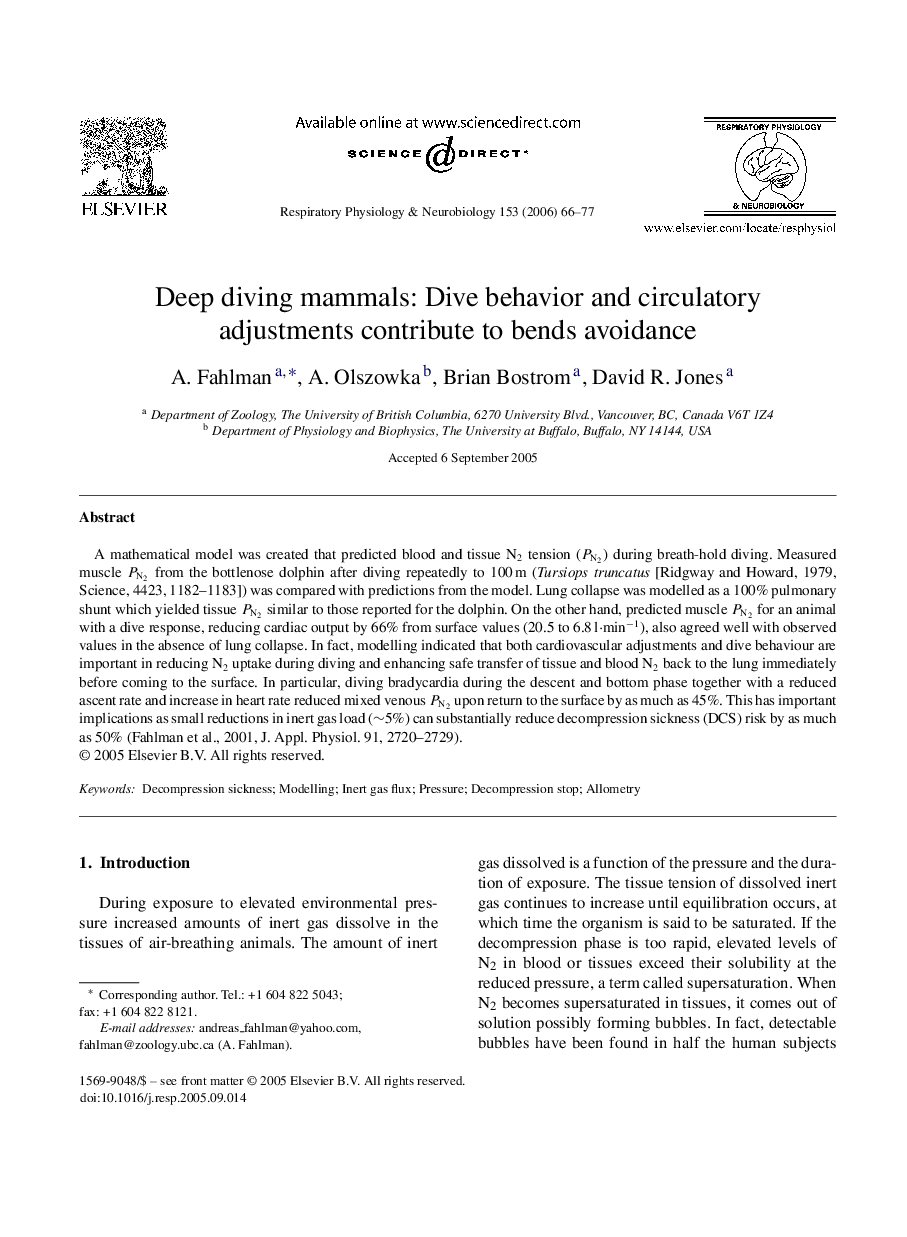| کد مقاله | کد نشریه | سال انتشار | مقاله انگلیسی | نسخه تمام متن |
|---|---|---|---|---|
| 2848491 | 1167425 | 2006 | 12 صفحه PDF | دانلود رایگان |

A mathematical model was created that predicted blood and tissue N2 tension (PN2PN2) during breath-hold diving. Measured muscle PN2PN2 from the bottlenose dolphin after diving repeatedly to 100 m (Tursiops truncatus [Ridgway and Howard, 1979, Science, 4423, 1182–1183]) was compared with predictions from the model. Lung collapse was modelled as a 100% pulmonary shunt which yielded tissue PN2PN2 similar to those reported for the dolphin. On the other hand, predicted muscle PN2PN2 for an animal with a dive response, reducing cardiac output by 66% from surface values (20.5 to 6.8 l·min−1), also agreed well with observed values in the absence of lung collapse. In fact, modelling indicated that both cardiovascular adjustments and dive behaviour are important in reducing N2 uptake during diving and enhancing safe transfer of tissue and blood N2 back to the lung immediately before coming to the surface. In particular, diving bradycardia during the descent and bottom phase together with a reduced ascent rate and increase in heart rate reduced mixed venous PN2PN2 upon return to the surface by as much as 45%. This has important implications as small reductions in inert gas load (∼5%) can substantially reduce decompression sickness (DCS) risk by as much as 50% (Fahlman et al., 2001, J. Appl. Physiol. 91, 2720–2729).
Journal: Respiratory Physiology & Neurobiology - Volume 153, Issue 1, August 2006, Pages 66–77